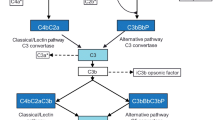Abstract
Serum immunofixation electrophoresis (IFE) is often performed for screening monoclonal proteins (M proteins) in immunoglobulin light-chain amyloidosis (AL amyloidosis). However, the performance of serum IFE for detecting M protein in AL amyloidosis patients is often insufficient. In this study, we examined the detection rate of serum M protein in newly diagnosed AL amyloidosis patients and analyzed differences in M protein detection between IFE methods. Among 60 patients newly diagnosed with AL amyloidosis, 22 had undetectable serum M protein by IFE with the Epalyzer2 system. Samples with undetectable M protein had significantly lower involved serum-free light-chain (iFLC) and a smaller difference between involved and uninvolved serum-free light-chain (dFLC) values than samples with IFE-detectable monoclonal light chains. When samples that tested negative for M protein by the Epalyzer2 system were retested by IFE with the HYDRASYS 2 system, 50% had IFE-detectable monoclonal light chains. The IFE system and reagents used may affect serum monoclonal immunoglobulin light-chain detection in AL amyloidosis patients, especially those with low iFLC or low dFLC samples. More attention should be paid to the performance of IFE systems, since it may affect the diagnostic and therapeutic evaluation of AL amyloidosis patients.

Similar content being viewed by others
Data availability
Original data is available upon reasonable request to the corresponding author.
References
Kastritis E, Palladini G, Minnema MC, Wechalekar AD, Jaccard A, Lee HC, et al. Daratumumab-based treatment for immunoglobulin light-chain amyloidosis. N Engl J Med. 2021;385:46–58.
Kawano Y, Hata H, Takashio S, Tsujita K, Ueda M, Matsuoka M. Daratumumab, lenalidomide and dexamethasone in newly diagnosed systemic light chain amyloidosis patients associated with multiple myeloma. Br J Haematol. 2022;198:e38–41.
Rajkumar S, Dimopoulos M, Palumbo A, Blade J, Merlini G, Mateos MV, et al. International myeloma working group updated criteria for the diagnosis of multiple myeloma. Lancet Oncol. 2014;15(12):e538–48.
Katzmann JA, Kyle RA, Benson J, Larson DR, Snyder MR, Lust JA, et al. Screening panels for detection of monoclonal gammopathies. Clin Chem. 2009;55:1517–22.
Palladini G, Russo P, Bosoni T, Verga L, Sarais G, Lavatelli F, et al. Identification of amyloidogenic light chains requires the combination of serum-free light chain assay with immunofixation of serum and urine. Clin Chem. 2009;55:499–504.
Kawano Y, Matsuoka M. Difference in clinical assessments of multiple myeloma by immunofixation electrophoresis systems. Int J Myeloma. 2023;13(1):1–5.
Registered Package Insert. Available from: https://www.pmda.go.jp/PmdaSearch/ivdDetail/ResultDataSetPDF/731017_224AAAMX00084000_A_02_01
Registered Package Insert. Available from: https://www.pmda.go.jp/PmdaSearch/ivdDetail/ResultDataSetPDF/700058_21600AMZ00494000_A_03_04
Bradwell AR, Carr-Smith HD, Mead GP, Tang LX, Showell PJ, Drayson MT, et al. Highly sensitive automated immunoassay for immunoglobulin free light chains in serum and urine. Clin Chem. 2001;47:673–80.
Palladini G, Dispenzieri A, Gertz MA, Kumar S, Wechalekar A, Hawkins PN, et al. New criteria for response to treatment in immunoglobulin light chain amyloidosis based on free light chain measurement and cardiac biomarkers: impact on survival outcomes. J Clin Oncol. 2012;30:4541–9.
Acknowledgements
The authors would like to thank all the physicians, nurses and data managers who contributed to this study.
Author information
Authors and Affiliations
Corresponding author
Ethics declarations
Conflict of interest
Yawara Kawano has received research funding from Sebia, has received honoraria from Janssen Pharmaceuticals Inc, Sebia, Ono Pharmaceutical, Takeda Pharmaceutical Co. Ltd., Bristol Myers Squibb Co., and Sanofi and has served on Advisory Board for Bristol Myers Squibb Co. Nao Nishimura and Jun-ichirou Yasunaga have nothing to disclose.
Additional information
Publisher's Note
Springer Nature remains neutral with regard to jurisdictional claims in published maps and institutional affiliations.
About this article
Cite this article
Kawano, Y., Nishimura, N. & Yasunaga, JI. Serum monoclonal immunoglobulin light-chain detection differs between immunofixation electrophoresis methods in patients with AL amyloidosis. Int J Hematol (2024). https://doi.org/10.1007/s12185-024-03790-4
Received:
Revised:
Accepted:
Published:
DOI: https://doi.org/10.1007/s12185-024-03790-4




